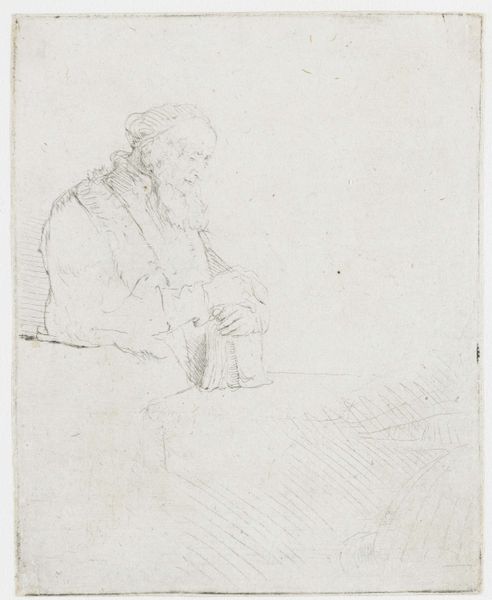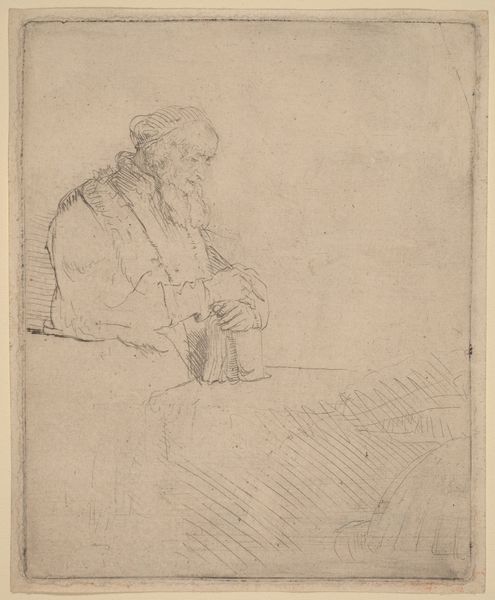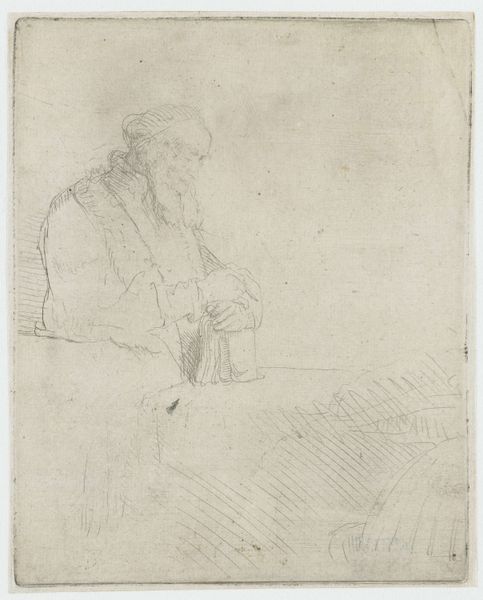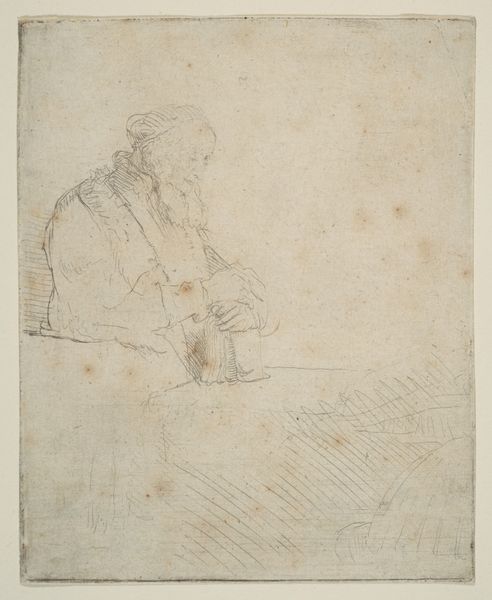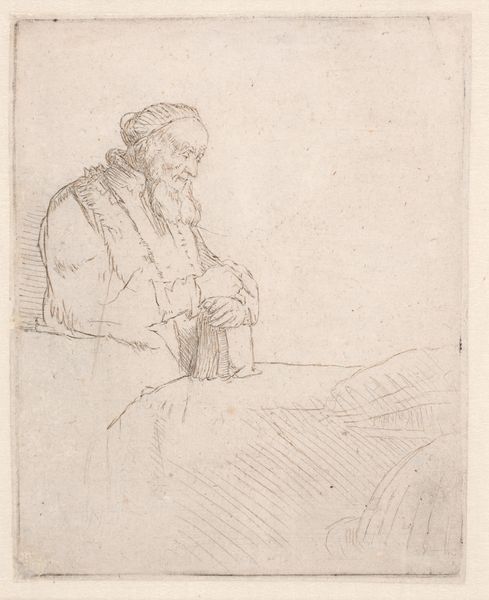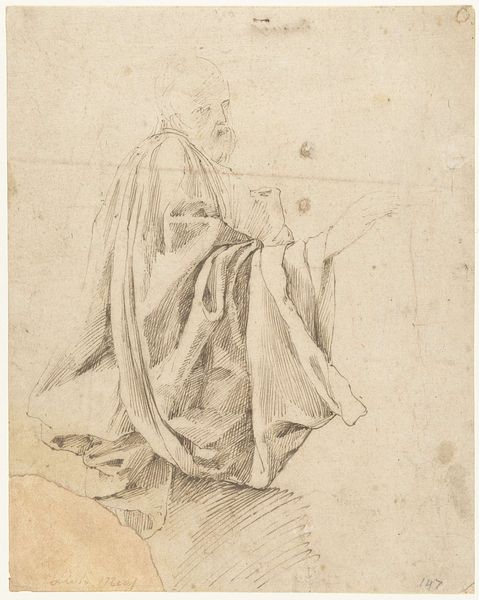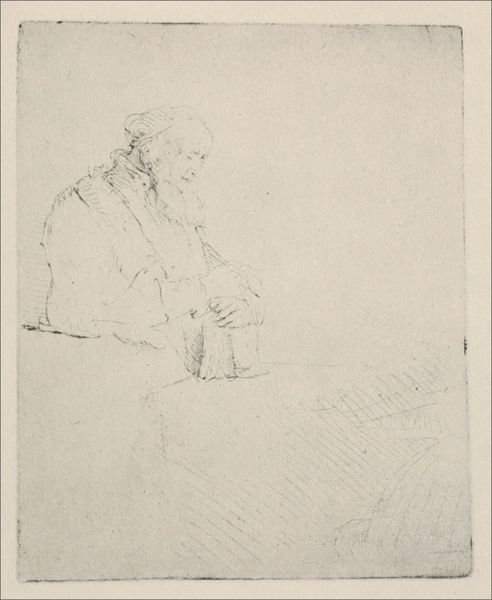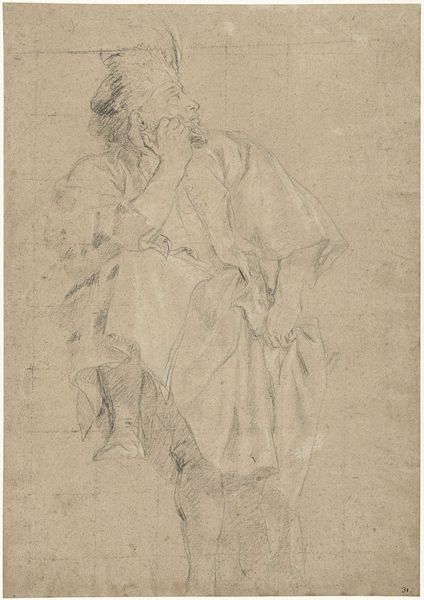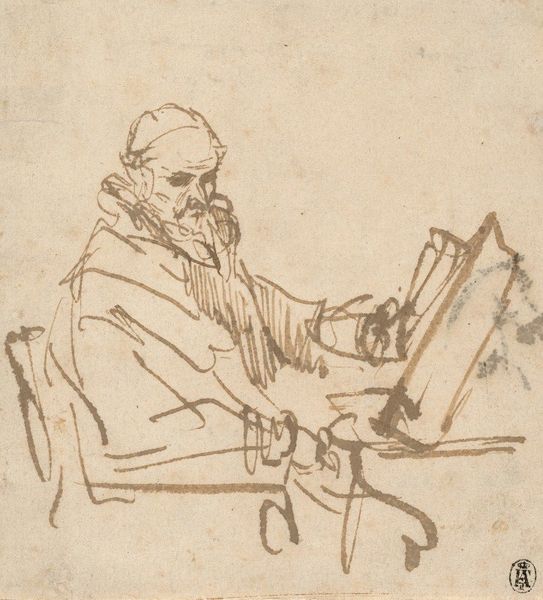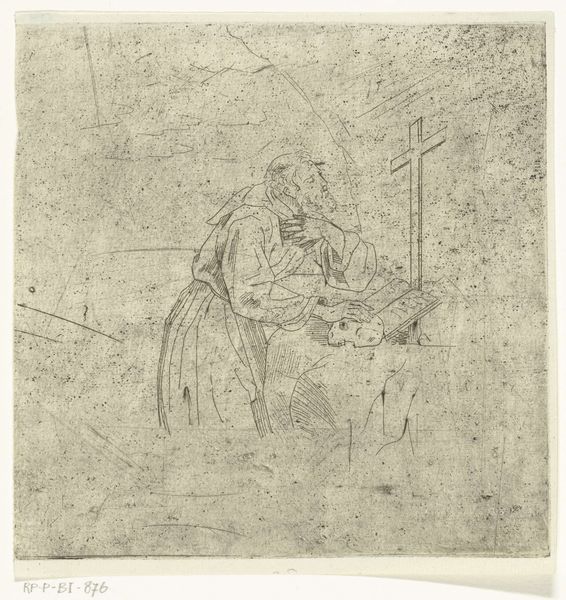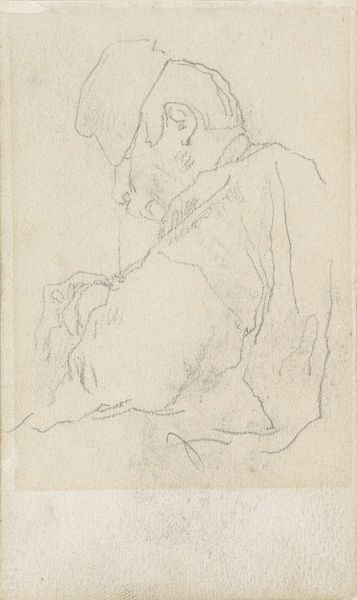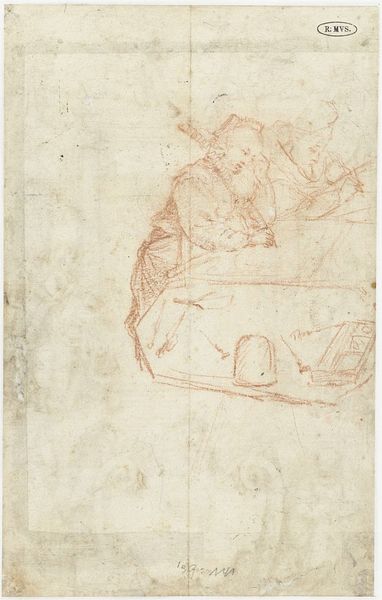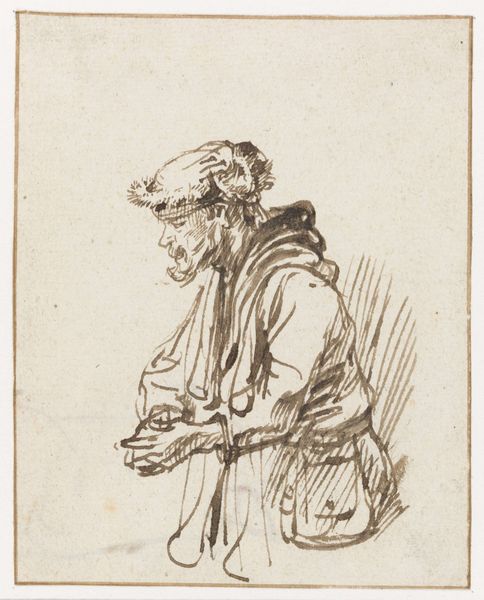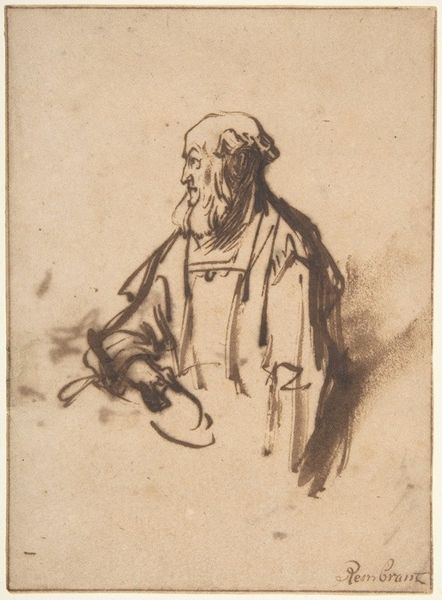
drawing, paper, pencil
#
portrait
#
pencil drawn
#
drawing
#
self-portrait
#
baroque
#
pencil sketch
#
paper
#
pencil
#
genre-painting
#
history-painting
#
academic-art
Copyright: Public domain
Curator: Here we have a drawing by Rembrandt van Rijn, dating back to 1645. It's titled "Old man in meditation, leaning on a book," executed in pencil on paper. Editor: There’s an incredible sense of fragility here. The thin lines, the muted palette—it feels like a whispered story about the weight of experience. Curator: Precisely. Rembrandt's masterful use of line and shading creates a palpable sense of depth. The figure seems to emerge from the paper, caught in a moment of introspection. Consider how the subject's form is established through light; see how certain strokes deepen to signify a change in plane or fabric. Editor: It’s impossible not to see the echoes of other elder men in similar contemplative states. He could be a scholar, a prophet... His apparent vulnerability in contrast with the book as a solid physical form seems particularly potent given the role of learned men and their connection to written power at the time. Curator: One can almost feel the texture of the paper and the deliberate pressure of Rembrandt’s hand as he built up the form through cross-hatching and delicate contours. In examining works such as this one we are given a clearer understanding of his methods. His visual grammar is built through formal tensions: weight and line, solidity and void. Editor: Yes, but Rembrandt was also deeply attuned to the human condition, portraying emotion and empathy so viscerally in his work. I look at that droop of the figure and I can almost imagine the model--if he was posed at all. What about those unseen folks experiencing political disenfranchisement and economic upheaval that rarely made their way into art in any sustained fashion. The so-called 'Dutch Golden Age' after all was largely financed through imperial endeavors and a robust, morally questionable, trading infrastructure. Curator: Perhaps, but consider the timeless appeal this style of close representation generates. We are confronted with universalities that far exceed localized considerations of the era in which it was produced. Editor: I find, overall, that the raw lines remind me of the impermanence of the lived experience itself, all those lives intertwined with larger societal conditions. Curator: It is quite extraordinary, isn't it? To have this close view into the hand of a master at work.
Comments
No comments
Be the first to comment and join the conversation on the ultimate creative platform.
